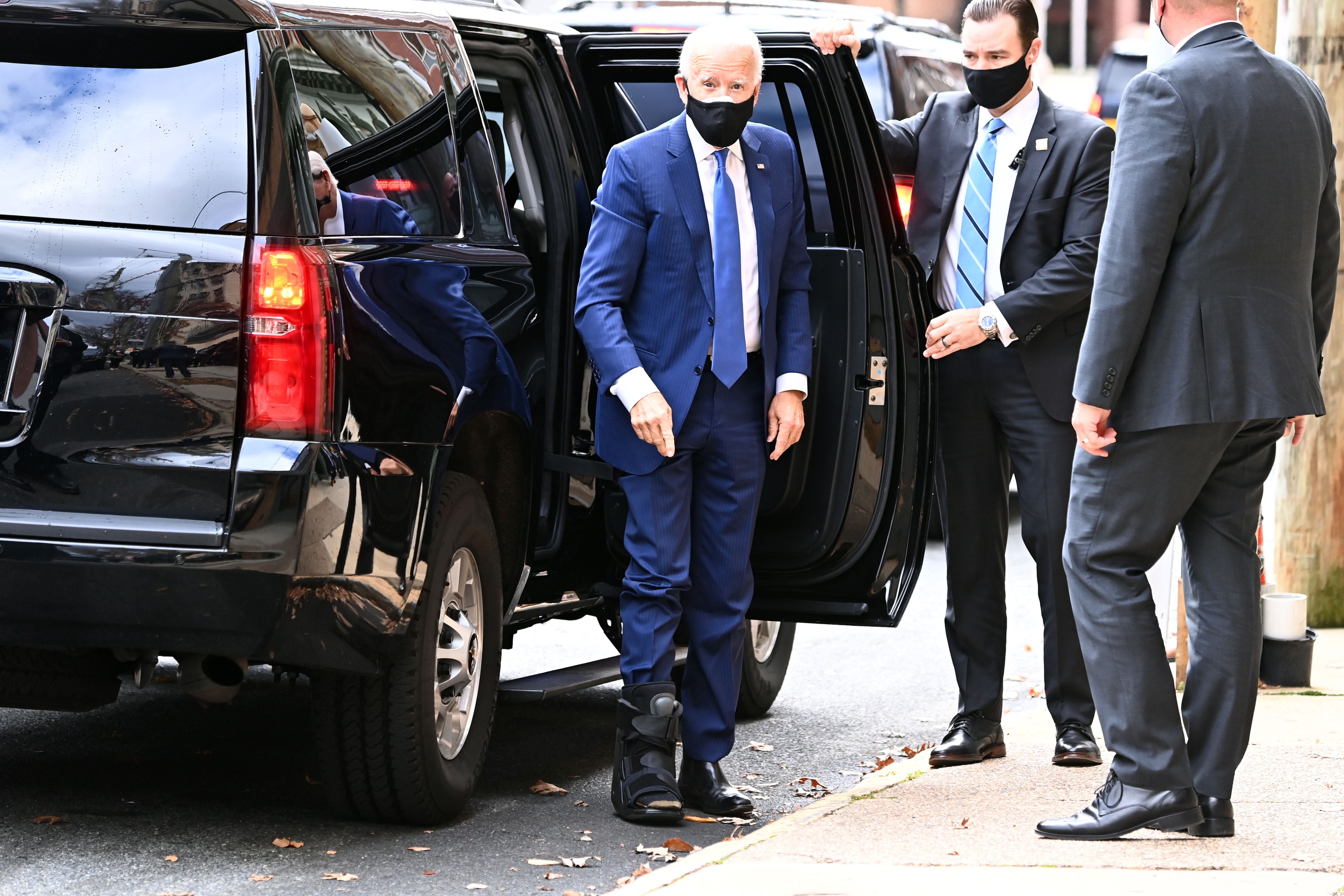The Independent's journalism is supported by our readers. When you purchase through links on our site, we may earn commission.
Biden’s transition team picks tell us how he plans to govern
‘I’m just watching this and going, Holy cow’


Donald Trump meant for the nickname “Sleepy Joe” to be a pejorative, but President-elect Joe Biden and his transition team are doing their best to live up to it.
One week after introducing most of their incoming national security team, Biden and Vice President-elect Kamala Harris will introduce key members of their economic team today. Those include Treasury Secretary-designate Janet Yellen (a former Federal Reserve chair who would be the first woman to lead the second-oldest cabinet department); Deputy Treasury Secretary-designate Wally Adeyemo (the first African American to serve in that role); and Cecilia Rouse, the Princeton School of Public and International Affairs dean who, if confirmed, would become the first African-American to chair the Council of Economic Advisers.
Along with proposed Office of Management and Budget director nominee Neera Tanden (who’d be the first woman of color to head the White House budget office), the group will join Biden’s national security team (including the first African American Director of National Intelligence and the first Latino and immigrant to lead the Department of Homeland Security) as the nucleus of the most diverse cabinet in American history. And with perhaps the sole exception of Tanden — whose notoriously combative social media presence has produced fodder for Senate Republicans’ criticism — Biden’s transition and cabinet rollouts have so far received bipartisan praise from a who’s-who of boldfaced names in and out of government.
And despite the 20-day delay in beginning the formal transition process due in large part to Trump’s refusal to acknowledge his loss, what stands out to veterans of previous transitions is how quiet, workmanlike, and — above all — normal the Biden-Harris has been in terms of tone, personnel, and presentation.
According to a source close to the Biden transition effort, that air of predictability has been baked into the process from the start.
“Normal might seem boring after the chaos of the last four years, but regardless of party, people just don't want the President of the United States in their lives every single moment of the day,” they said.
It’s a far cry from the nonstop reality-show spectacle that kicked off the official beginning of the Trump era.
For 72 days in late 2016 and early 2017, Americans had a literal real-time view into how and with whom Donald Trump would govern through the unblinking eye of a television camera, trained on the golden elevator doors in his eponymous skyscraper’s lobby. Anyone who wanted to know with whom Trump was meeting could simply point their web browser to C-SPAN to watch prospective cabinet members, Trump advisers, and a string of celebrities pay their respects to the incoming 45th President of the United States. They could also watch the assembled pool of reporters engage in the occasional impromptu press conference with visitors, or go behind the curtain on the frequent occasions when Trump summoned them to observe him hold court with a particular dignitary (for instance, the then-Japanese Prime Minister Shinzo Abe) who he wanted to show off.
The nonstop drama of potential appointees and nominees parading through Trump’s lobby was made even more chaotic by the fact that the Trump-Pence transition literally started from scratch days after the election. That’s because Trump trashed months of preparation work by former New Jersey Governor Chris Christie, reportedly on the advice of his son-in-law Jared Kushner, whose father Christie had sent to prison years earlier.
For veterans of past transitions, it was a warning of the dysfunction to come.
“It was horrifying,” said former Republican National Committee Chair Michael Steele, who advised Christie during his months of pre-election transition planning. “The reality of it was what you were watching was what Trump told us he wanted to do: a deconstruction of the process.”
Chris Lu, who served as executive director of the Obama-Biden 2008 transition, called a well-planned transition “essential to the early success of a new administration.” He noted that Trump didn’t get a well-planned transition himself because he threw out all the prep work.
“When Trump’s transition chair was fired after Election Day 2016 and all the briefing materials thrown away, that was a pretty clear sign of the chaos and turmoil that would characterize Trump’s presidency,” he said.
Four years later, the contrast between Trump and his successor could not be more evident than in where and how the public is let into their transition processes.
Whereas the center of the Trump transition universe was a gleaming glass tower which dated back to the heyday of Trump’s career, the center of gravity for Biden’s effort to “build back better” has been a downtown Wilmington, Delaware theater which is almost as old as the republic itself.
Originally built as a hotel in 1789, the Queen Theater has hosted a future president before. Martin Van Buren stayed there in 1829, seven years before he became America’s eight president. But after a nearly 200-year break, the building’s return to hosting presidents-to-be came this summer, when the Biden-Harris campaign began paying roughly $100,000 per month (according to Federal Election Commission reports) to use it as a location for taping media interviews and holding staged events.
And while the choice of setting has largely been dictated by the realities of the ongoing Covid-19 pandemic, the Biden transition official said it’s no accident that the way the 46th President is rolling out his cabinet — in pre-planned announcements by group — is such a contrast with how the 45th did it.
“This crazy thing of having people parade into either Trump Tower or to Bedminster like they were auditioning for a job… It was sort of demeaning for people to go there [because] everybody knew that they were being considered by being put in front of cameras,” the official said. “We can debate about how, you know, Trump has shattered norms, and how, in certain ways, things will never be normal again. But I think this — in terms of the selection of not only how these picks are rolled out, but who these picks are — is, I think, a return to normal.”
That return to normalcy has been well-received by those who’ve watched past transitions.
Steele — who saw the careful plans of the Christie-led Trump transition jettisoned in favor of chaos and cameras — said the way Biden and his team are keeping their internal deliberations out the spotlight until they’re ready to make announcements will be a relief to exhausted Americans.
“There isn’t that reality-TV, ‘let's peek behind the curtain and see and see how they make the sausage’ stuff because no one cares anymore. They don’t want to see the making of the sausage, just give them the finished package — the whole thing with the label on the wrap — they just want it done,” he said. “It was a novelty to watch the drama of the cameras, following people into elevators and then Trump walking out and making these grand pronouncements about nothing, but that was 2016. Now we say: ‘Can you just can you just show me competency?’”
And Former Vermont Governor Howard Dean, who chaired the Democratic National Committee during the 2008-2009 Obama-Biden transition, praised the Biden’s transition’s dedication to keeping announcements low-key and drama-free; it bodes well for his governing strategy, he added.
“I think that's healthy for the country, that it's not this ridiculous spectacle that we saw four years ago, but I think this is how Biden's gonna run his government,” Dean said.
Dean also praised Biden’s cabinet choices as “workhorses” rather than “show horses,” the latter of which he cited as a perennial source of problems.
“[Ronald] Reagan got himself in a lot of trouble because of showiness with people like [Defence Secretary] Cap Weinberger and other people who couldn't stay on the reservation,” he explained, contrasting the drama around Reagan Chief of Staff James Baker’s and Treasury Secretary Donald Regan’s 1985 job swap with the way Biden’s picks are known to be well-suited for their roles.
“We've got a long way to go, but so far I would give this an A-plus. First, you roll out in order of a criticalness to the country — that is the defense of the country — then you roll out the entire team for economics,” he said. “I don’t know what will be next, but he’s grouped them together as a team and that’s really important. I'm just watching this and going ‘holy cow,’ it's just sheer competence. And you don't see that in government all that often.”

Join our commenting forum
Join thought-provoking conversations, follow other Independent readers and see their replies